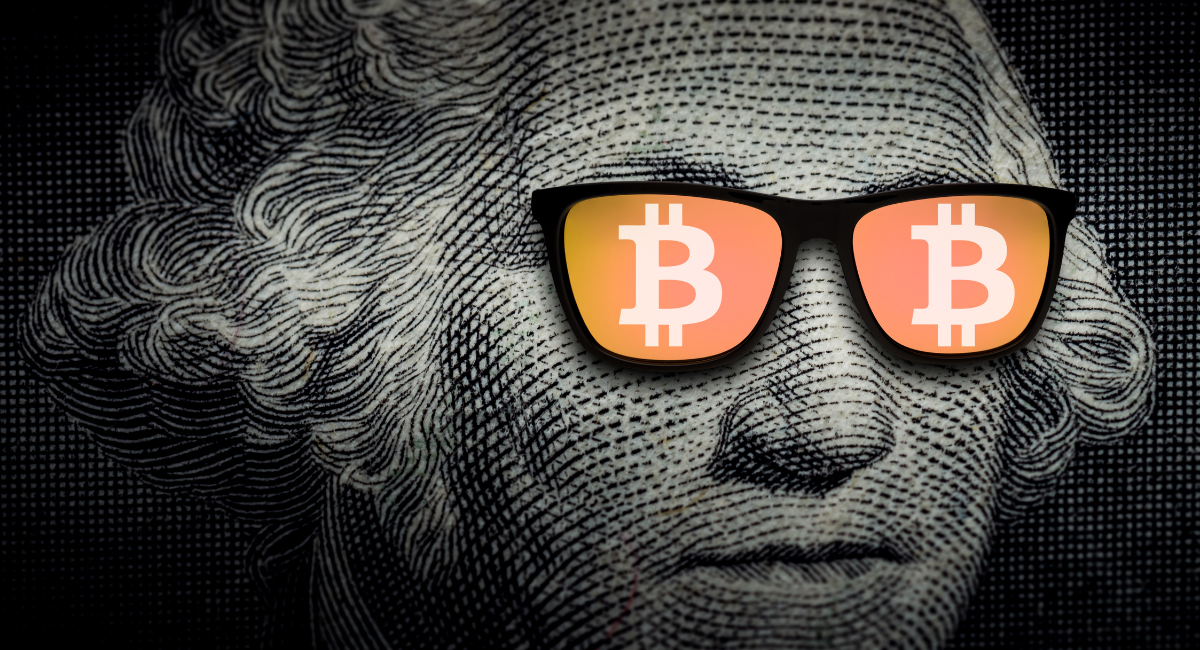Blockchain
Web3 explained: Understanding the evolution from web1 and web2 without any blockchain knowledge

Introduction
Web3, the decentralized web. It’s all the buzz among tech enthusiasts and blockchain fanatics. But what is it and why should we care? Web3 is the next generation of the internet. It’s a network of decentralized systems, enabled by the power of blockchain technology. Imagine a world where users have complete control over their data, and online transactions are completely secure, transparent and tamper-proof. Why should we care? The current internet, Web2, is plagued by issues of data privacy, censorship, and centralized control. Web3 offers a solution to those problems, allowing for greater transparency, security and user control. It empowers individuals, giving them the ability to truly own their data and online interactions. So, get ready for the evolution of the internet, where decentralization is king. Web3 is set to revolutionize the way we interact online, and we should all be excited about its potential.
The Evolution of the Web
The Internet has come a long way since its inception. From the static Web1 to the social Web2, we are on the cusp of another transformation – Web3, the decentralized web.
Web1, also known as the static web, made its appearance in the early days of the internet. It was a one-way communication channel where users could only consume information without the ability to interact and create content. The web pages were static and unchanging, and the content was limited to text and images. Needless to say, the experience was underwhelming.
Web2, also referred to as the social web, marked a significant shift in how we use the internet. The introduction of social media platforms such as Facebook, Twitter, and Instagram brought people closer, allowing them to connect and interact with each other in real-time. It gave users the ability to create and share content, making the internet a more collaborative space. However, Web2 had its downsides – centralized control, censorship, and privacy concerns.
Web3, the decentralized web, aims to address the shortcomings of its predecessors. It uses blockchain technology to offer a trustless and decentralized system where users can interact securely without the need for intermediaries. Smart contracts and decentralized applications or DApps enable parties to transact with each other without the need for traditional legal structures, reducing costs and increasing efficiency.
Overall, Web3 promises greater security, increased control over personal data, and a better user experience. The evolution from Web1 to Web2 and now to Web3 is a testament to our quest for a better internet experience. With decentralized technology, we can build a more open, collaborative, and secure internet that benefits everyone.
What Makes Web3 Different
What Makes Web3 Different? Web3 is distinct from its predecessors in several ways.
The most significant difference is the integration of blockchain technology, the underlying technology of cryptocurrencies. Blockchain is a type of database that stores data across a network, ensuring transparency, security, and immutability. Smart contracts, which are digital contracts that self-execute when certain conditions are met, make up another key feature of Web3.
Smart contracts enable the creation of decentralized applications or DApps. DApps use blockchain technology to provide their services without intermediaries, giving users more control over their data and transactions. Another feature that differentiates Web3 from its predecessors is decentralization. Decentralization means that the control of a network is distributed among its users, rather than a single entity. This feature provides greater resilience against attacks and ensures that no single entity can control or manipulate the network.
Web3 also provides greater privacy for users, allowing them to protect their data from surveillance and third-party exploitation. The ability to enter into transactions anonymously is another feature that distinguishes Web3 from its predecessors. However, Web3 faces some challenges, such as scalability, interoperability, usability, and regulatory uncertainty.
The main challenge facing Web3 is scalability, or the ability of a network to handle a large number of transactions in a timely and efficient manner. Interoperability, or the ability of different blockchain networks to communicate with each other, is another challenge. Web3 is still in its infancy, but it is clear that it will play a significant role in the future of the internet. Its integration of blockchain technology, smart contracts, and DApps will create a more open, transparent, and democratic internet.
The Benefits of Web3
So, what exactly are the benefits of Web3? Let’s dive in! Firstly, increased security is a primary benefit of Web3. With blockchain technology, cryptographic algorithms secure all transactions and data. This means that there’s no central authority or server that can be hacked or manipulated, making it a highly secure system. This is a game-changer for industries like finance and healthcare, where security is of the utmost importance. Next up is censorship resistance. In Web3, users have complete control over their data and how it is used. There’s no governing body or central authority imposing restrictions on what users can and cannot do on the platform. You are your own master, free from censorship and able to exercise your right to free speech and expression. Greater control over personal data is another advantage of Web3. In conventional web structures, companies collect and use user data without explicit consent. The decentralized web changes this by letting users own their data and choose who has access to it. This means that users can decide what data is shared with advertisers or other third parties, enhancing privacy and security. Last but not least, Web3 promises a better user experience. DApps built on decentralized infrastructure help users interact with platforms remotely without relying on intermediaries. This means more efficient and seamless interactions, minimal waiting times, and a more user-friendly experience overall. In a nutshell, Web3 offers numerous benefits ranging from enhanced security, censorship resistance, and greater control over personal data to improved user experience. Regardless of the challenges still ahead for Web3, these strengths are making it increasingly attractive to users and businesses, poised to shape the future of the internet.
The Challenges of Web3
The Decentralized Web is not free from challenges. While it promises to revolutionize the existing internet, certain challenges hinder its mainstream adoption. One of the most significant challenges is scalability. The current infrastructure of Web3 does not support mass adoption, and high transaction costs might push users back to traditional systems. Interoperability, or the inability to communicate between different blockchain protocols, is another challenge. This restricts the flow of information between blockchains, hindering their potential. Furthermore, the user experience of Decentralized Applications (DApps) remains a concern. Many DApps are difficult to navigate, and their user interfaces lack intuitiveness. Additionally, the regulatory landscape remains uncertain, with different countries imposing different regulations on blockchain-based systems. This makes it difficult for organizations to establish a clear legal framework. Overall, while Web3 promises to be a game-changer in the digital space, it still has a long way to go before it can be truly mainstream. It needs to address these significant issues to ensure wider acceptance.
The Future of Web3
The future of Web3 is exciting, with mainstream adoption being the ultimate goal. For this to happen, it needs to seamlessly integrate with Web2. This hybrid will enable users to enjoy the best of both worlds without experiencing any hiccups. Web3’s potential is vast. It is pioneering innovative use cases that we never thought were possible. One of these is NFTs (Non-Fungible Tokens), which are transforming the art world. For instance, Christie’s recently auctioned a digital art piece for a record-breaking $69 million! Web3 is also changing the way we interact with the internet. It is empowering users with exciting use cases like decentralized social media platforms and decentralized finance. Web3’s decentralized nature ensures increased security and data privacy. Furthermore, it is censorship-resistant, giving users freedom of expression without fear of suppression. Web3 faces a few challenges, such as scalability and regulatory uncertainty. However, with continued innovation, these issues will become a thing of the past. In conclusion, Web3’s future looks bright, with emerging use cases paving the way for mainstream adoption. As we usher in this new era, one thing is clear, the internet will never be the same again. It’s time to embrace Web3, the decentralized future of the internet.
Conclusion
Congratulations! You have just stepped into the world of Web3. With blockchain technology, smart contracts, and decentralized applications, Web3 offers increased security, censorship resistance, and more control over personal data. However, challenges like scalability, interoperability, usability, and regulatory uncertainty need to be addressed. The future of Web3 looks promising with mainstream adoption, integration with Web2, and emerging use cases. Get ready to enter a new era of the internet, where you are in control. So, what are you waiting for? Let’s dive into Web3!
Blockchain
US GAO Issues Key Recommendations to SEC Prior to Historic Spot Bitcoin ETF Approval
Blockchain
Bitcoin ETFs Witness Surge in Trading Activity as SEC Approves 11 Products

In a significant development for the cryptocurrency industry, the U.S. Securities and Exchange Commission (SEC) recently approved 11 spot Bitcoin exchange-traded funds (ETFs). This approval comes after a decade-long struggle between regulators and the digital asset industry, marking a watershed moment for the acceptance of digital assets as mainstream investments. Among the approved ETFs are BlackRock’s iShares Bitcoin Trust, Grayscale Bitcoin Trust, and ARK 21Shares Bitcoin ETF.
Unprecedented Inflows:
On the first day of trading, these ETFs saw impressive activity, with $4.6 billion worth of shares changing hands across all the products, according to LSEG data. Bitwise, a crypto asset manager, reported that its spot Bitcoin ETF alone attracted $240 million, making it the most popular among the newly introduced products. Grayscale, BlackRock, and Fidelity dominated total trading activity, according to the LSEG data.
Also Read: Grayscale Court Decision Crucial in SEC’s Approval of Bitcoin ETFs, Says Chairman Gary Gensler
Bitwise’s Chief Investment Officer, Matt Hougan, expressed optimism about the future, stating, “We think that this will become a market measured in the tens of billions of dollars.” This surge in interest highlights a growing acceptance of Bitcoin and other cryptocurrencies among traditional investors.
Competition and Fee Wars:
The SEC’s approval has sparked intense competition among issuers to gain market share. Franklin Templeton, reacting swiftly, slashed the fee for its Bitcoin ETF to 0.19 percent, the lowest in the market. Additionally, the company waived fees entirely on the product’s first $10 billion in assets under management until August. Valkyrie, another player in the space, reduced its fees to 0.25 percent after its ETF started trading. This fee war is indicative of the fierce competition among ETF issuers to attract investor capital.
Grayscale’s Transition to ETF:
Grayscale, a prominent player in the cryptocurrency investment space, received approval to convert its existing Bitcoin trust into an ETF. This move instantly made it the world’s largest Bitcoin ETF, managing over $28.6 billion in assets. Despite this success, the ETF experienced outflows of $95 million on the first day of trading. The ability of Grayscale to navigate this transition will be closely watched, as it sets a precedent for other trusts considering a similar shift.
Regulatory Caution:
While the SEC’s approval is a significant step forward, it is important to note that SEC Chair Gary Gensler emphasized that the decision should not be interpreted as an endorsement of Bitcoin. Gensler referred to Bitcoin as a “speculative, volatile asset,” highlighting ongoing concerns about investor protection. The regulatory nod indicates a willingness to explore the potential of digital assets, but caution is warranted as the market continues to evolve.
Conclusion:
The approval of 11 spot Bitcoin ETFs by the SEC marks a turning point for the cryptocurrency industry. The influx of billions of dollars within the first day of trading demonstrates a growing acceptance of digital assets among traditional investors. The fee wars among ETF issuers and Grayscale’s transition into an ETF further highlight the competitive dynamics and challenges in the market. As the cryptocurrency market matures, ongoing regulatory scrutiny and investor sentiment will play crucial roles in shaping the future of these innovative financial products.
Blockchain
Tether CEO Advocates for Real-World Use Cases in Crypto Without Blockchain or Tokens

In a recent exclusive interview with Cointelegraph, Tether CEO Paolo Ardoino has voiced his belief that the future of the crypto industry lies in providing real-world use cases without necessarily relying on tokens or blockchain technology. Ardoino argues that the next breakthrough in the industry should focus on the fundamental value proposition offered by cryptography, emphasizing peer-to-peer transactions and privacy protections.
“Crypto doesn’t need a blockchain. It doesn’t need a token,” Ardoino stated, challenging the conventional reliance on these technologies. He proposes that the industry should shift its focus towards practical applications that offer tangible benefits to users.
Ardoino suggests that potential killer apps in the crypto space could take the form of everyday solutions, such as a booking system or a competitor to ride-sharing services like Uber. The key, according to him, is to leverage the core strengths of cryptography in facilitating secure and private peer-to-peer transactions.
One of the primary concerns raised by Ardoino is the centralization and regulatory scrutiny associated with token issuance. He argues that introducing a token creates a centralized point of failure, increasing the likelihood of regulatory challenges. Ardoino notes that many projects that issued tokens are currently under the scrutiny of regulatory bodies like the U.S. Securities and Exchange Commission (SEC).
“To be decentralized, this system wouldn’t need blockchain technology, which is slow and requires a global shared state,” Ardoino explained. He cited BitTorrent as an example of a decentralized system that achieved success without relying on blockchain technology.
The Tether CEO contends that departing from the conventional blockchain and token model could lead to more innovation and adoption in the crypto industry. By focusing on the core principles of cryptography, projects can potentially avoid regulatory challenges and offer solutions that resonate with a broader audience.
Also read:Bitcoin-Centric Firms Surge in Pre-market as BTC Soars Past $45K
As the crypto industry continues to evolve, Ardoino’s perspective challenges the status quo, encouraging a shift towards real-world applications that prioritize user experience and practicality over traditional blockchain and token-centric approaches.








